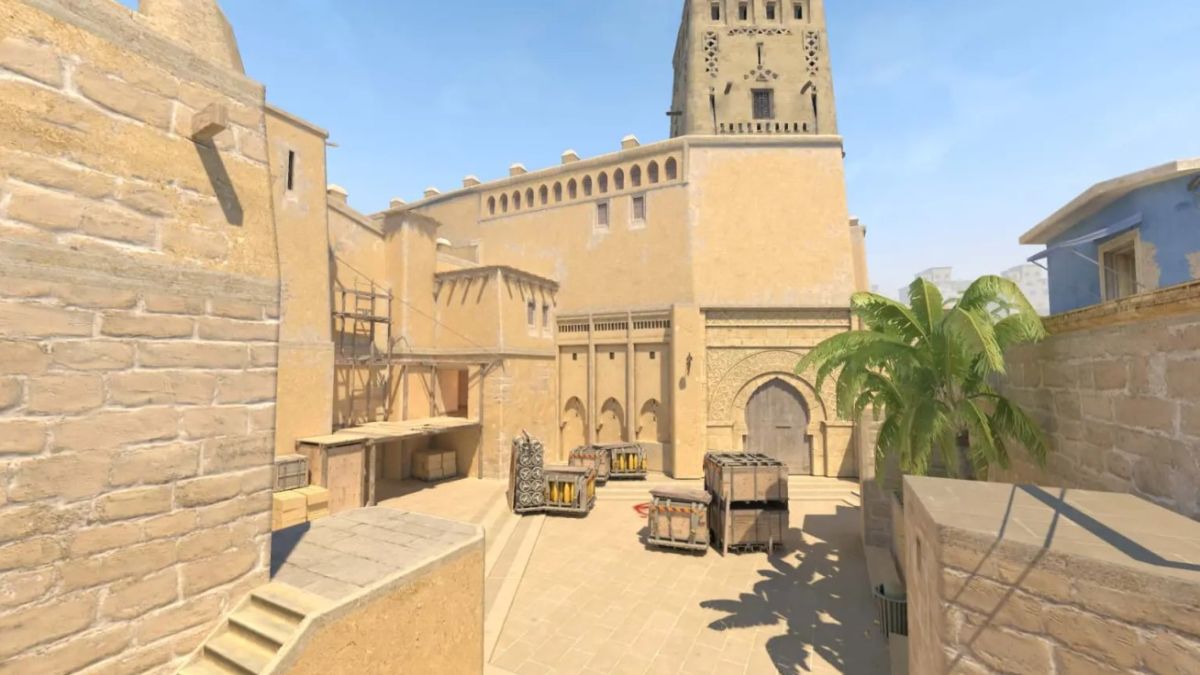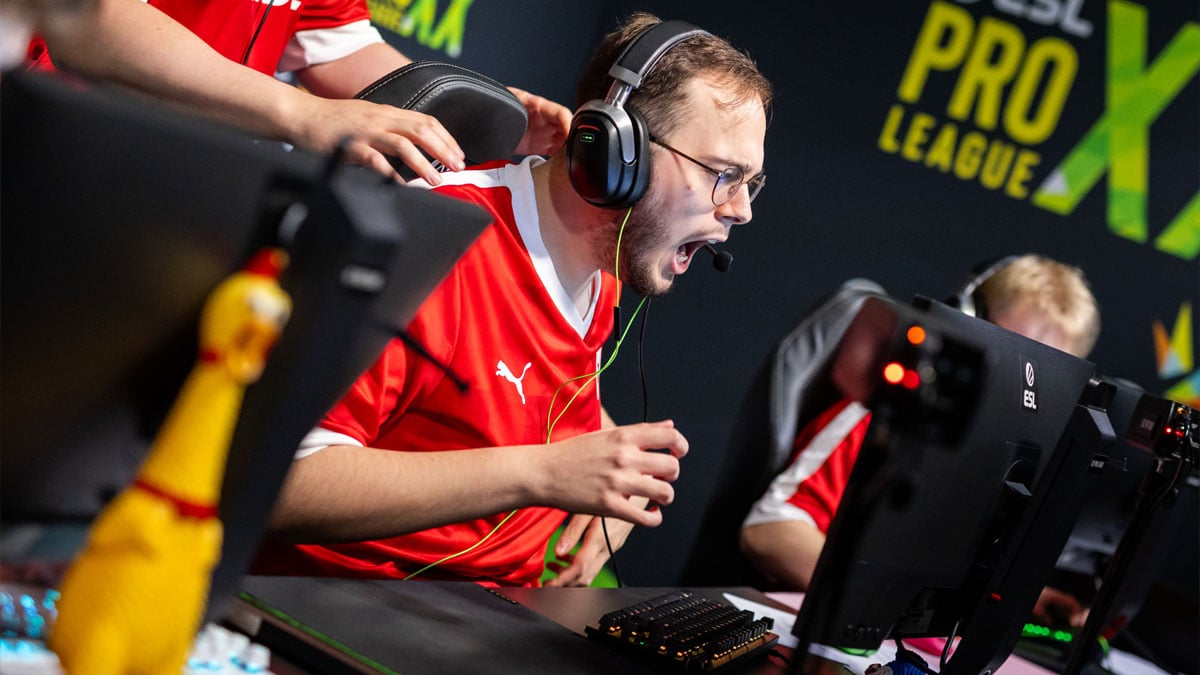The Counter Strike majors are the most prestigious events in all of Counter Strike. Players and teams have repeated endlessly the significance of these particular events; the importance of playing on that massive stage in front of the energizing crowd and the extra exerted effort in practice in the months leading up to the premier event. Counter Strike Majors are undoubtedly the pinnacle of FPS Esports, yet, the format of the tournament leaves a lot to be desired.
Counter Strike’s brilliance as a spectator sport has largely alleviated and perhaps even hidden some of these significant flaws but just contemplate how much more incredible the illustrious Valve-sponsored majors would be had Valve taken the measures to rid the event of these blatant deficiencies.

The Group Stage
The suitability of best of one has always been a large discussion point for the community. Personally I find best of ones to be more than acceptable. They possess a certain charm to them. The elevated significance of each specific map played and the increased chance of potential upsets makes best of one matches incredibly entertaining. Unlike other genres where the snowball effect is much more pronounced and early mistakes are potentially irrecoverable, comebacks are always possible in Counter Strike which results in best of ones being far less of impediment. And while best of threes will undoubtedly result in the better team winning more often the increase in likelihood isn’t as significant as you might expect.
The best of ones themselves aren’t necessarily the issue but rather the format of the group-stage, the GSL format.
I have always been a massive advocate for the GSL format over round robin. Unlike round robin where there’s a large opportunity for the last several matches to be entirely meaningless, every match in the GSL format is important. There are no complications with tie-breakers and there is no opportunity for teams to intentionally throw matches to help their friends.
The GSL format obviously has a lot going for it but unfortunately it also has quite a few notable cons, namely the ability for teams to qualify for the playoffs following two best of one wins or being eliminated from the tournament entirely following two best of one losses.
Counter Strike Majors are the most illustrious, most celebrated, most exciting events in all of Counter Strike. Do they need deserve group stages that are representative of that? It leaves an incredibly sour taste in my mouth knowing that teams have spent months qualifying for, months rigorously practicing for and some even travelling half way across the planet to compete at these Majors only to be met with group-stages which can see them drop out of the event entirely following two best of one losses.
Counter Strike majors are in desperate need of better group stages; in need of a format that tests the skill of the teams and awards them accordingly. A format suited for the World Championships of Counter Strike that make the months of practice and hours of travel worthwhile.
My suggestion would be shifting back to the old round robin format but expanding the groups to 8 so that teams play significantly more matches against a range of different teams and fans get to watch a group stage actually worthy of a Counter Strike Major.
The Seeding
Another fatal flaw in the current Counter Strike Major format is the seeding.
Currently teams are split into four pools depending on their results at the previous major and the qualifier. The first pool (first seed) consists of teams that finished in the top 4 of the previous major. The second seed is made up of the teams who finished fifth to eighth. The third pool of teams are the teams that qualified through the upper bracket of the final major qualifier groups and the last pool is made up of the teams that qualified through the lower bracket of the major qualifier.
The groups for the major are derived by randomly picking one team from each pool until you have 4 teams per group and 4 groups at the major. Initially it does seem like a fair system. Teams are awarded a seed based on their previous performance and the groups are randomly drawn making them inherently fair… However, the fatal is that this system operates on the assumption that teams don’t improve or decline in between major tournaments. It also doesn’t take into consideration potential upsets. As a result you’re inevitably stuck with seeding that isn’t representative with the current landscape of professional Counter Strike.

As an example; Fnatic are the best team in the world, it’s undeniable. They’ve just won 6 international tournaments in a row and the roster hasn’t lost a single event, ever. They’re undoubtedly the #1 seed on the planet but because of the intrinsically flawed seeding system Valve uses for their major, Fnatic are situated in the second pool while on the other hand, Ninjas in Pyjamas who are arguably not even a top 8 team are seeded in the first pool. There are incredible ramifications to this horrible seeding system, namely completely uneven groups. At the MLG Columbus Major there was potential for Na`VI, Fnatic, Mousesports and Liquid to be put in one group with Ninjas in Pyjamas, Virtus Pro, Splyce and FlipSid3 in another. As you can see the groups are incredibly unfair. There’s a large likelihood where a good team is eliminated from the tournament because they’re stuck in a difficult group but a bad team qualifies because they’re awarded with an easier group. What’s worse is that the ramifications of messed up seeding don’t just affect this one major but future majors as well.
Valve needs to completely re-evaluate the seeding system for their majors to make sure these situations are never possible. The optimal solution would be to work with popular analysts and sites like HLTV.org to deliver an accurate ranking system that can be used to help deliver fair seeding for the Major events.
The Draining Schedule
The current scheduling of the majors sees 12+ sometimes even 15 hour days of competitive Counter Strike. These incredibly long, draining days are detrimental for the players, the talent and the fans alike. It’s incredibly tiresome and unhealthy as well as ineffective at retaining the average viewer. Most viewers do not have 15+ hours a day 3 or 4 times a week to watch Counter Strike being played professionally and even if they did it’s far too exhausting for it to be enjoyable.
The incredibly rushed group stages, the quarter finals all being played in one day and the refusal to play and stream matches played simultaneously are all reasons for these effectively inhumane broadcasting hours. Valve need to recognize this and implement some changes to make sure that the tournaments are reasonable in length for the talent on hand, easy to spectate and follow for the general fanbase which constitute most of the fanbase, and still entertaining and exciting for everybody.

Some obvious suggestions are to expand the tournament into a two week tournament with the group stages being played in one week and the playoffs in the other. Another suggestion would be to utilize multiple streams and play matches simultaneously. Simultaneous matches help alleviate the long broadcasting hours while also providing the added benefit of alleviating the situation that currently exists where fans are left watching to obviously inferior teams play for several hours. It’d make sure fans nearly always have an interesting match to watch.
Valve need to take a look at the scheduling of their majors and make sure that it’s reasonable for the fans, the players and the talent. And heck even the producers behind the organization of the event.
Random Map Draw
Another ridiculous problem is the random map draw currently used at majors. It makes no sense for Valve to continue to allow random map draws in such a competitive environment. Potentially deciding matches on RNG is incredibly detrimental to counter Strike as a whole and with best of ones and the seeding system the ramifications of this horrible idea is even more pronounced.
Valve need to immediately rid themselves of this horrible idea. The easy solution would be to allow teams to veto 3 maps each so that there is as little RNG as possible involved with determining the outcome of a matchup.
The Lack of Double Elimination
The scarcity of double elimination competition in Counter Strike has always saddened me. Personally I’ve always found double elimination tournaments to be the most exhilarating, most entertaining and most dramatic competitions in esports. They develop the most storylines and they offer teams more matchups (clearing up the issue of teams playing too few matches).
The main arguments against double elimination are the tough scheduling, the extra thrill and recognizability a single elimination bracket offers as it’s the format most used in traditional sports. I mentioned in the previous section that expanding the Counter Strike Majors to two weeks would majorly benefit the scheduling, if the Counter Strike major is expanded to two weeks then there’s more than enough time to fit in a lower bracket so that initial argument is moot.
As for the second argument, it’s completely true that single elimination does provide a certain level of thrill knowing that teams only have one life but double elimination also provides a plethora of advantages that more than make up for the loss of that one benefit e.g the added potential for storylines, the more head to head matchups and a more accurate representation of how teams rank at the tournament.
The recognizability argument, however, I believe is entirely meritless. I personally don’t see double elimination being a complicated format that people who are not aware of it would have a hard time understanding and I also don’t see why it would make a difference whether or not they do understand it.

Valve aren’t strangers to double elimination either, in fact, they use it in all their Dota 2 tournaments and as far as I’m aware the Dota 2 community is incredibly satisfied with it. Dota 2’s international has outperformed the League of Legends World Championships in terms of entertainment every year and I attribute that largely due to the lack of double elimination in the League of Legends World Championships.
CSGO Majors would greatly benefit from the implementation of a double elimination bracket and I hope Valve contemplate its addition in future events. And if Valve aren’t on board then I hope other event organizers would be thoughtful enough to implement it in their events. It’s been proven time and time again that double elimination provides an incredible spectacle so it only makes sense that event organizers at least consider it.
A Side Point
Being the norm in other esports, the implementation of best of 5s has always been a contentious matter in the CSGO environment. Recently best of 5s have become more and more common yet it’s still not quite clear whether or not they really should be implemented. Players, analysts, organizers and fans are all split on what the correct decision is as there are plenty of pros and cons that can be argued.
The main question that has to be asked, is best of 5 even necessary in Counter Strike?
Personally, I’m not sure.
Counter Strike as a game is more than sufficient at determining the better team in a best of three. Best of threes are also more than adequate for providing an exhilarating spectacle. Do bo5s really provides that much?
Best of 5s are great for testing a team’s adaptability and versatility. Teams need to be stronger on more maps and they need to be constantly adapting to their opponents on potentially 5 different maps. Best of 5’s are also great at testing a team’s endurance, stamina, mental fortitude and durability. Think that some pundits would consider attributes to a great team.
So best of 5 does add quite a bit in terms of entertainment value… But the real problem is the length of a best of 5 series. Counter Strike matches are usually quite long with matches lasting roughly an hour, if a best of 5 series would go to five maps then one best of 5 could last nearly 7 hours when you take into account the downtime necessary in between matches for analysis, advertisement and rest for the teams. 7 hours for a single match seems exceedingly long for the fans and the teams. It can be argued that after a couple of hours teams are no longer playing at their full ability; instead of two brilliant teams battling it out at full capacity displaying excellent Counter Strike you have two exhausted teams struggling to get across the finish line.
There are arguments on both sides and I personally haven’t found anything too convincing so at this point I’m still neutral. I’ll leave it up to you guys to continue to discussing whether or not best of 5 has a place at Counter Strike Majors.
photo credit//esl







Published: Mar 17, 2016 11:00 am